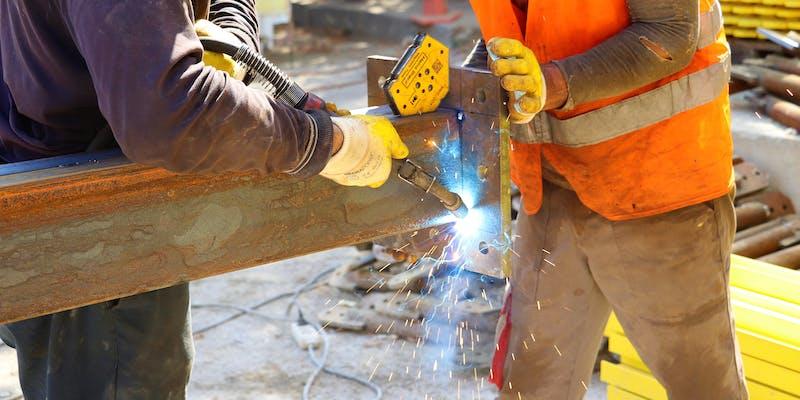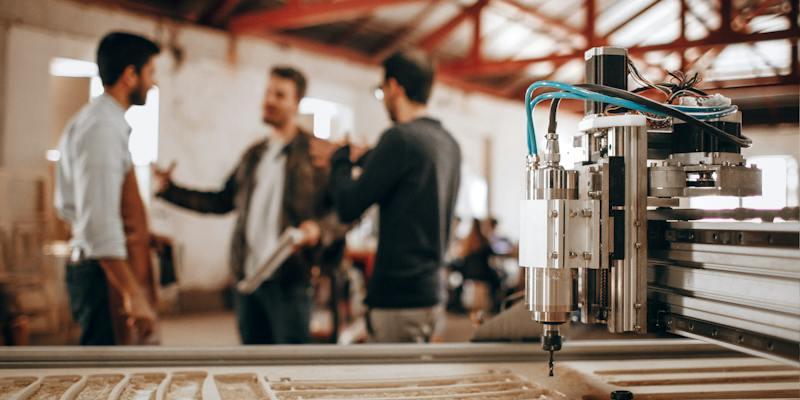Jobs that demand a lot of physical work are still around today. These jobs, where you need more hands than machines, can cost more in terms of paying people than in buying equipment. Although we often think these jobs don’t need much training or schooling, that’s not always the case. As tech improves and workers become more efficient, some work areas have shifted from needing lots of manual labor intensive jobs to less. However, sectors like the food industry, hospitality, farming, mining, and health care still rely heavily on human effort.
You’ll find more of these labor-heavy industries in countries still developing economically. This is mainly because there’s not enough money to buy pricey machines. But, by hiring more people, who often get lower wages, these businesses can keep up in the market. Over time, this might change as they invest more in machines and less in manual labor.
Looking back, nearly everyone worked in farming before machines changed the game in the industry. It was a job that needed a lot of people. But as technology grew and the economy improved, people started working less in fields and more in factories and services. This shift shows how jobs can change with new tech and better ways of doing things. It’s a reminder that work isn’t just about what we do but how we do it, and that changes with each new invention and discovery.
Examples of Labor Intensive Work

Fashion Industry
Within the style enterprise, the advent of customized merchandise is a prime instance of a hard-working, in-depth process. Unlike mass-produced gadgets, every layout inside the custom fashion segment is precise, necessitating skilled human exertions. As of 2021, reviews showed that the global fashion market has become valued at around $1.5 trillion, with a sizeable portion coming from custom-designed fashion.
This labor intensive jobs zone is heavily predicated on artisans and architects whose abilities cannot be replicated by using machines. In comparison, mass-produced apparel traces comply with a capital-intensive method. General designs are replicated in large portions using computerized machinery, lowering the want for human exertions. For example, a 2019 study indicated that clothing production automation should cut exertion costs by up to 40% in nations like Bangladesh and Vietnam.
Provider Industries
carrier industries like healthcare, criminal, and economic offerings are inherently labor-intensive. For instance, within the healthcare zone, despite technological advances, the demand for specialists like medical doctors and nurses remains high. A study in 2020 revealed that the U.S. healthcare quarter employed over 18 million human beings, accounting for about eleven% of the USA’s overall team of workers.
Even as automation makes inroads into labor intensive industry repetitive responsibilities within those industries, the human detail is irreplaceable for nuanced decision-making and personalized service. As an example, inside the criminal area. However, while AI can assist in record evaluation, it can not replace human legal professionals' vital thinking and ethical judgments.
Researching Departments
Studies and development (R&D) sectors, mainly in fields like biotechnology and prescribed drugs, continue to be labor-intensive. Human information is vital in bridging the distance between theoretical know-how and realistic utility. In 2022, it became pronounced that the pharmaceutical enterprise alone invested approximately 17% of its total sales in R&D, emphasizing the world's reliance on professional hard work.
The reality is extraordinary, even in AI research, where one may count on minimal human involvement. Human researchers play a pivotal function in setting studies' agendas, deciphering information, and ensuring ethical suggestions are followed.
Real Estate Development
In actual property improvement, while machinery like cranes and forklifts has reduced some manual hard work, human involvement stays vital. For instance, in 2021, the construction enterprise within the United States employed over 7 million people despite the huge use of machinery. The price of superior technology like 3D printing in construction remains prohibitively excessive for many economies, preserving the enterprise's reliance on exertions.
Agriculture
The labor intensive industry intensity of agriculture's hard work varies appreciably with the country's financial development level. In developing nations, agriculture stays predominantly exertion-extensive. For example, as of 2020, agriculture employed about 60% of the workers in regions like Sub-Saharan Africa. But, as international locations industrialize, there may be a substantial shift in the direction of mechanization in agriculture, lowering exertion depth.
In developed countries, the trend is in the direction of high-tech agriculture, which relies much less on guide exertions and more on era. This shift is obvious in the decreasing percentage of agricultural staff in these countries over the past many years.
Limitations of Labor-Intensive Industries

Reduced Output Levels
hard work-in-depth industries face a considerable undertaking in keeping up with the output levels of their mechanized opposite numbers. For instance, a 2019 file by the World Labour Agency highlighted that sectors relying heavily on guide exertions, like agriculture and handicrafts, show a marked lower productivity than computerized manufacturing industries.
In agriculture, the common labor intensive method employee's output is often less than half that of a person in a mechanized putting. This disparity in productivity leads to a delivery for mismatch. As guide exertions can not produce as speedy or as much as machines, there is often a shortfall in supply. For example, hand-woven fabrics have a limited output inside the fabric enterprise, so customers opt for machine-made textiles that can be quite simple to have.
Decrease Monetary Turnover
The manual effort required in such industries often interprets to higher prices for the quit merchandise. For example, within the style enterprise, Mass-produced designer garments are commonly priced higher than handmade mass-produced garments. Data from the style industry indicates that a clothier outfit's common fee is about 35% better than its device-made counterpart.
Difficulty in Meeting Consumer Demand
The distinctiveness of products from labor-intensive industries can be both an energy and a problem. Each hand-crafted object has wonderful features, making it tough to reproduce the same pieces on a huge scale. This area of expertise occasionally ends in unmet purchaser expectations. For example, in artisanal food markets, customers frequently count on a constant taste and quality that's challenging to hold in a non-mechanized setup. A study carried out in 2020 with the aid of the Artisanal Meals Association discovered that around 25% of consumers have been upset due to product versions.
Inconsistency in Quality Standards
Human error is inevitable in labor intensive method work, affecting the overall first-class of the products. A survey by the Nice Managul Institute in 2021 indicated that manually industrially produced items had a 30% better defect price than items mass-produced using automated strategies.




